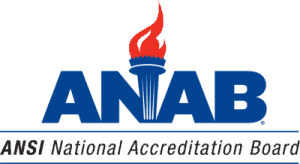The Seven Types of AI: What They Mean for the Conformity Assessment Community

As Artificial Intelligence (AI) systems evolve, so too must the ways the conformity assessment system ensures competence, consistency, and confidence in the results they produce. AI is no longer just a buzzword or distant concept—it’s shaping industries, services, and becoming an integral part of our lives. The ANSI National Accreditation Board (ANAB) recognizes the growing impact of AI and the importance of reliable standards, such as ISO/IEC 42001, and assessments to ensure trust in its development and deployment.
Functional AI vs Capable AI
The conformity assessment world is one of requirements and standards, and with AI being a vast and ever-evolving field, how do we understand it to create these requirements and standards? One way to understand the complex AI world is through categorization. AI can be categorized in several ways, but of the most common are capability and functionality. Capable AI types demonstrate advanced behaviors such as reasoning, adapting, or understanding emotions. While functional AI types perform specific tasks without understanding or awareness. Recognizing the different forms and types of AI is key to maintaining confidence and reliability in conformity assessment practices.

Kim Lucy, director of governance, risk, and compliance (GRC) standards at Microsoft says, “ANAB is critical for providing accreditation for certification to ISO/IEC 42001—the first and currently only certification standard for responsible AI. As a management system for organizations developing, providing, and/or using AI, ISO/IEC 42001 offers a scalable and modular framework to embed trust, accountability, and operational rigor into emerging technologies like AI—enabling users to meet regulatory expectations, align with global best practices, and build systems that are not only compliant, but resilient and responsible by design.”
The Seven Types of Artificial Intelligence (AI)
Even with the adoption of ISO/IEC 42001, several risks remain when it comes to AI use and its various types—such as privacy concerns, misinformation, deepfakes, lack of transparency, dependency, and ethical challenges. Currently, there are seven types of AI—three based on functionality and four on capability—each representing a different level of advancement and organizational impact.
1. Reactive Machines (functional)
These are the most basic AI systems as they do not store memories or past experiences. Instead, they react to current inputs in a consistent way. Reactive AI can be deployed in testing or inspection settings where repeatability and speed are critical, such as initiating or stopping procedures when preset conditions are met.
2. Limited Memory (functional)
Most AI systems in use today, including those used in autonomous vehicles, chatbots, and virtual assistants, fall into this category. These systems use historical data for a short time to make decisions. For instance, self-driving cars monitor speed, road conditions, and nearby objects—using this data in real-time to navigate safely. However, it is important to note that this AI system does not learn continuously from interactions and does not store memories unless explicitly designed to do so.
3. Theory of Mind (functional)
This is a theoretical stage of AI development that aims to simulate the ability to understand and model the mental states of others—such as beliefs, emotions, intentions, and desires. While theoretical, it aims to interpret emotional cues, predict human behavior, engage in social interaction, and adapt dynamically. Potential uses of this AI offer limitless potential, and with it, many risks.
4. Self-Aware AI (functional)
This is the most advanced (and currently hypothetical) form of AI. Self-aware AI would not only understand human emotions and thoughts but also possess its own consciousness. This level of AI could set goals, experience emotions, and make independent decisions. However, development of this type of AI offers extreme ethical, legal, and safety considerations.
5. Artificial Narrow Intelligence (ANI) (capable)
Also known as “weak AI,” ANI is designed for a specific task, meaning it can only do what it was trained or programmed to do (e.g., recognize faces, drive a car, write emails). It increases efficiency, reduces error, and enhances decision-making. However, there are things it can’t do, such as think creatively, form opinions, adapt, or understand emotion – large limitations in decision making. Even with its limitations though, it is a powerful and practical system and is the foundation of the AI tools transforming every industry today.
6. Artificial General Intelligence (AGI) (capable)
AGI, or strong “strong AI,” would be capable of understanding, learning, and applying knowledge across a broad range of tasks—much like a human. AGI would be able to transfer learning from one domain to another and reason across disciplines, such as a robot scientist that can switch from diagnosing patients to designing buildings—but doesn’t necessarily know it exists. The key difference between AGI and Self-Aware AI is that AGI isn’t aware of itself.
7. Artificial Superintelligence (ASI) (capable)
ASI is the hypothetical stage of AI development where machines not only match human intelligence (as in AGI), but vastly exceed it in every possible way—intellectually, creatively, emotionally, and socially. Creation of ASI offers many concerns, such as loss of control, unequal access, and irreversibility.
AI and ANAB
As AI continues to evolve, the conformity assessment community must evolve with it. Understanding the seven types of AI is not just theoretical—it’s foundational to building trustworthy systems and conducting credible assessments. By staying informed and engaged, we can help shape the responsible development and deployment of AI technologies. ANAB is committed to leading this effort by supporting frameworks that prioritize safety, ethics, and accountability—ensuring that innovation doesn’t outpace integrity.






